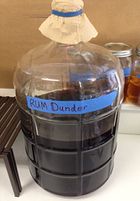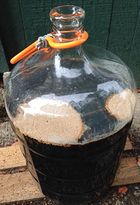Dunder: Difference between revisions
Jump to navigation
Jump to search
m (added HD links) |
(→External Links: added link, formatted links) |
||
| Line 16: | Line 16: | ||
==External Links== | ==External Links== | ||
*[https://en.wikipedia.org/wiki/Dunder Dunder at Wikipedia] | *[https://en.wikipedia.org/wiki/Dunder Dunder at Wikipedia] | ||
*[https://www.bostonapothecary.com/muck-hole-not-dunder-pit/ “Muck Hole” Not “Dunder Pit”] | *[https://www.bostonapothecary.com/muck-hole-not-dunder-pit/ Boston Apothecary:“Muck Hole” Not “Dunder Pit”] | ||
*[http://cocktailwonk.com/2016/03/days-of-dunder-setting-the-record-straight-on-jamaican-rums-mystery-ingredient.html Cocktail Wonk: Days of Dunder, setting the record straight] | |||
[[Category:Distillation]] | [[Category:Distillation]] | ||
[[Category:Fermentation]] | [[Category:Fermentation]] | ||
[[Category:Glossary]] | [[Category:Glossary]] | ||
Revision as of 12:51, 16 January 2018
The liquid left in a still after a run of rum is completed, also know as stillage. The dunder is used in subsequent mashes to aid in fermentation and add flavor to the distillate. Dunder is put into a open container (the famed Dunder Pit) to encourage bacterial infection. These bacteria create Carboxylic acid that is then converted into an Ester. Dunder pits must be maintain by the removal and addition of fresh dunder or some materials in the dunder pit will decompose into ammonia.
Typically for Rum 10-25% of the wash liquid is Dunder. Some papers show usage up to 50%.
A Dunder pit is not a Muck Pit.
See also: Barm, Backset, Sour Mash
HD Posts
- Dunder pit infections
- Does a dunder pit create esters or a feedstock for them?
- When to add aged dunder?

